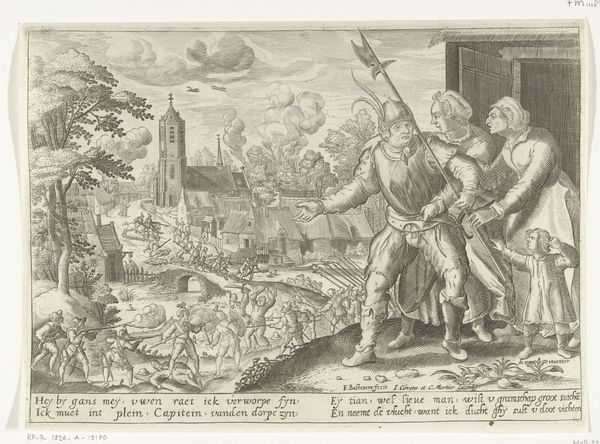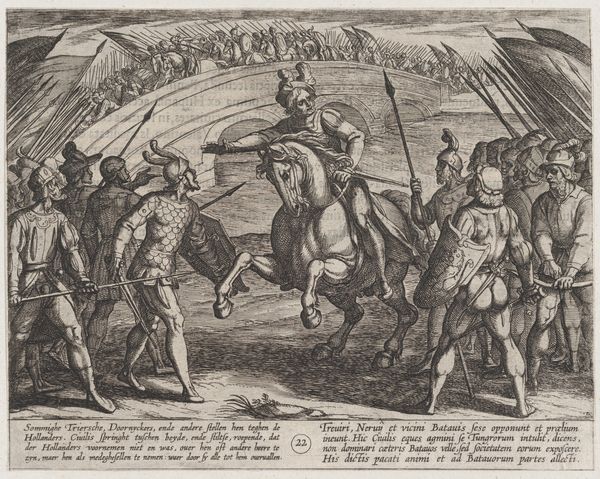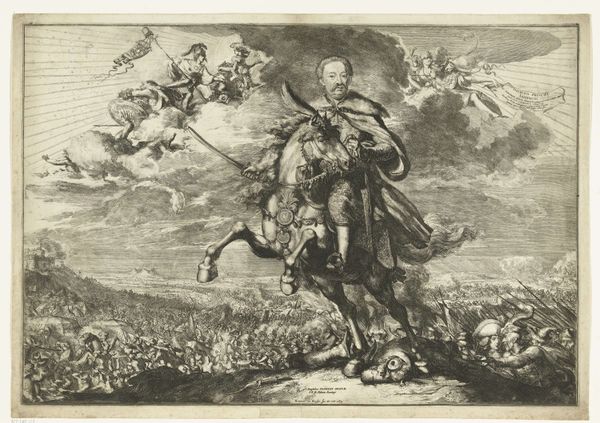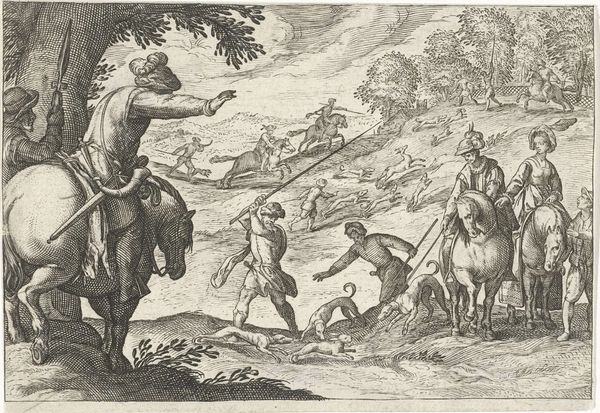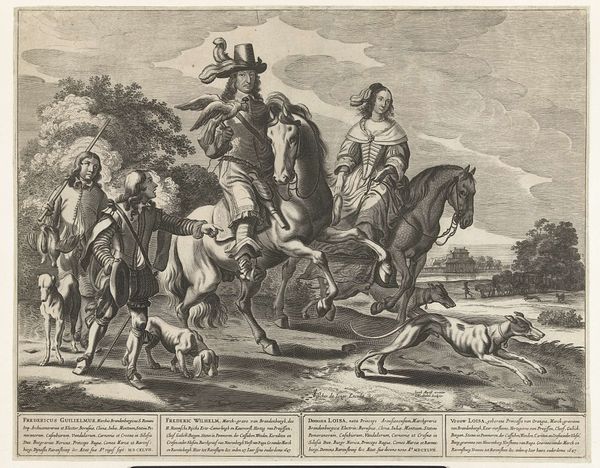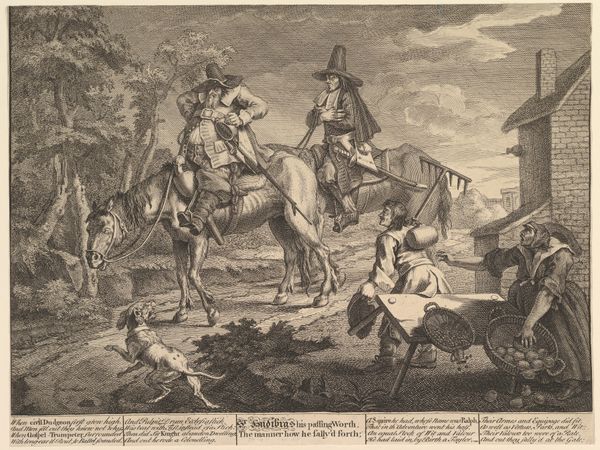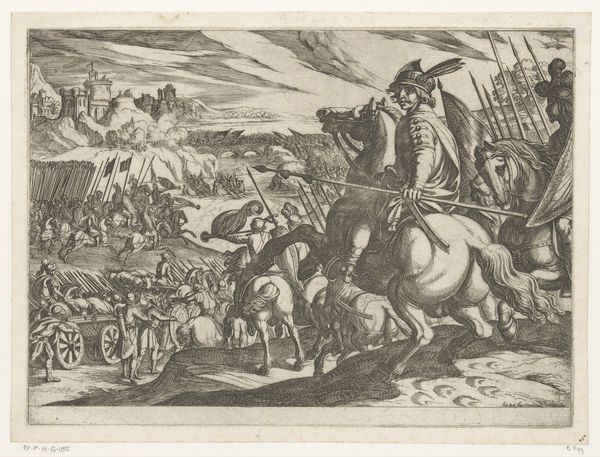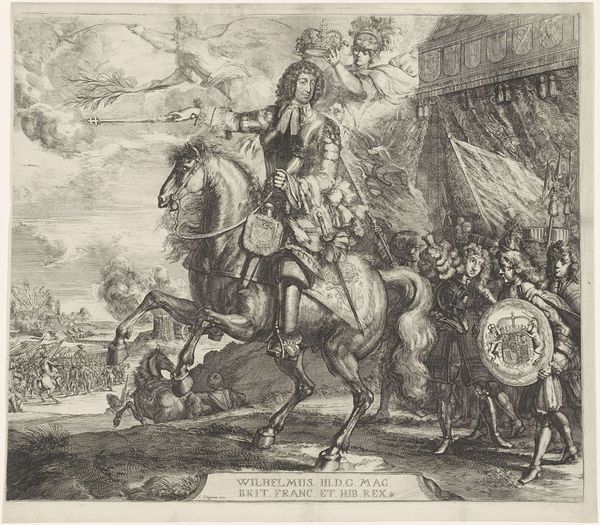
print, engraving
#
allegory
#
narrative-art
#
baroque
#
dutch-golden-age
# print
#
pen sketch
#
figuration
#
pen-ink sketch
#
line
#
pen work
#
engraving
Dimensions: height 255 mm, width 356 mm
Copyright: Rijks Museum: Open Domain
Editor: Hendrick Hondius I’s "Ruiter en de Dood," or "The Horseman and Death," is a 1644 engraving held at the Rijksmuseum. What strikes me most is the contrast. On one side, you have this vibrant horseman, full of bravado. And then, looming, is Death, also on horseback, but skeletal and winged. How do you interpret this piece? Curator: It's a fascinating print, especially when considering its socio-political context. The Dutch Golden Age was marked by both incredible prosperity and devastating outbreaks of plague. Hondius' work is a classic "memento mori," reminding viewers of the ever-presence of death, irrespective of social standing. Editor: So, it’s meant to be a moral lesson about humility in the face of death? Curator: Exactly, but it goes deeper. Look at the way Death is depicted, on a winged horse, a parody almost of classical triumphal entries. The print underscores the futility of earthly power and ambition, ideas particularly resonant within the increasingly Calvinist Dutch Republic. It raises questions about how institutions, including the emerging art market, grappled with anxieties around mortality and earthly vanities. Who controlled the imagery of death and what political purposes did such images serve? Editor: I see. It's not just about personal piety; it's about how societal anxieties are visually represented and perhaps even exploited. Curator: Precisely. Hondius's "Ruiter en de Dood" reminds us that art is always embedded in the complex tapestry of its time, reflecting social anxieties and power dynamics. Editor: It makes you consider what anxieties our own art is reflecting. Thanks, that gives me a lot to think about. Curator: My pleasure.
Comments
No comments
Be the first to comment and join the conversation on the ultimate creative platform.


